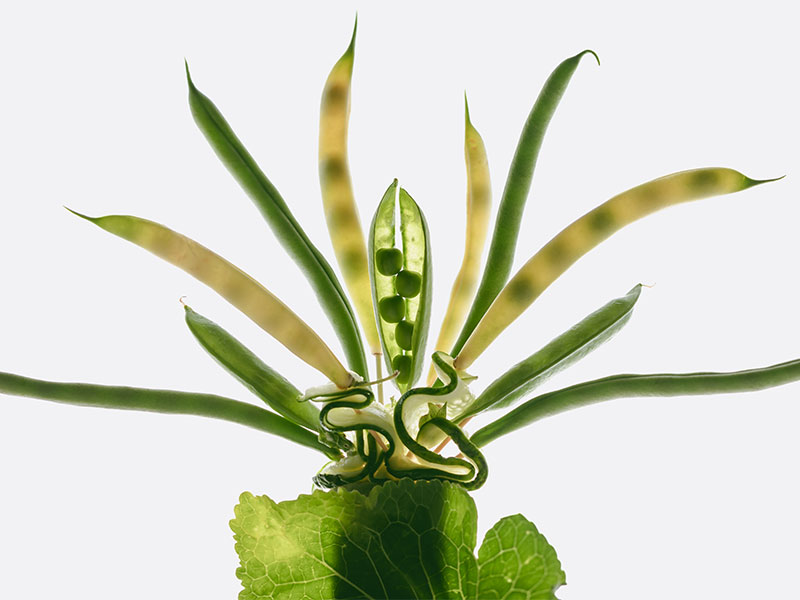Are your indoor plants struggling with persistent diseases and poor yields despite your best efforts? Curious about the root causes affecting their health and productivity? Identifying these issues and applying strategic solutions is crucial for creating a thriving indoor garden. Let's explore the common challenges faced by indoor gardeners and learn how advanced strategies can result in healthier plants and increased yields.
Recognizing Signs of Distress in Indoor Gardens
Indoor gardening provides the benefit of controlled environmental conditions, but it also brings unique challenges like plant diseases and poor yields. These issues can significantly affect both the economic value and the joy of indoor gardening. Plant diseases can thrive in indoor environments, especially when vital factors like light, soil moisture, and temperature are not properly managed.
Have you noticed signs of distress in your indoor garden? Perhaps your plants are growing elongated, spindly stems that stretch toward available light sources in search of nourishment. This phenomenon, called etiolation, leads to weak, fragile stems that struggle to support the plant, leaving them susceptible to bending or breaking.
You might also see pale yellow leaves, known as chlorosis, indicating a lack of essential nutrients or insufficient photosynthesis. Chlorosis can affect both older and younger leaves, leading to premature leaf drop, where leaves shed earlier than expected.
Flowers may be scarce, and those that do bloom could wilt quickly or fail to mature into healthy fruits. Even the fruits and vegetables that form might be undersized or poorly developed, lacking the vibrant flavor, color, and quality you expect. They could be misshapen, have blemishes, or ripen inconsistently.
If your plants appear generally stunted, with minimal leaf development and reduced vigor, it's a clear indication that they are unable to thrive under current conditions. These symptoms detract from the lush appearance of your garden and reduce its productivity and economic potential. Early recognition of these signs is crucial, allowing you to implement corrective measures in time to restore the health and vitality of your indoor garden.
Why Do These Problems Occur?
To tackle these issues effectively, it's essential to first understand their root causes. Key factors contributing to plant health challenges include limited light exposure, inconsistent soil moisture, and fluctuating temperature conditions—all crucial for plant vitality but often compromised in indoor environments.
Inadequate light is particularly detrimental. Light drives photosynthesis, the process where plants convert light energy into chemical energy, which is vital for growth. During photosynthesis, chlorophyll absorbs light and uses this energy to convert carbon dioxide and water into sugars that fuel growth.
Without adequate light, photosynthesis falters, leading to insufficient energy production. This energy deficiency stunts growth, as plants can't produce enough sugars to form new stems and leaves. Flowers may be fewer, poorly developed, or fail to bloom altogether. This results in lower yields as blossoms fail to mature into fruit.
Poor lighting also compromises the quality of produce. Fruits and vegetables may be smaller, lacking the robust flavors and vibrant colors associated with healthy growth. Additionally, plants may stretch their stems to seek more light, resulting in weak, spindly growth that cannot support healthy leaves or fruit.
Consistent light exposure is critical for effective food production and resistance to stress and disease. Poor lighting conditions can significantly impair the "credit rating" of your garden's health and productivity, often leading to subpar harvests that fall short of expectations.
Ensuring optimal lighting conditions is essential for proper plant growth, flowering, and fruit production. Providing sufficient and consistent light will safeguard the health, productivity, and value of your indoor garden, creating a flourishing and sustainable growing environment. Without ultraviolet (UV), infrared (IR), and deep red light, photosynthesis is impaired, leading to abnormal leaf development, stunted growth, and weakened immunity. Addressing these gaps with comprehensive lighting solutions is crucial for high-quality yields.
Optimizing Growth with Adlite Supplemental Lights
Indoor gardening presents unique challenges, particularly regarding plant health and productivity. Addressing these challenges requires lighting technologies that can replicate the most beneficial aspects of natural sunlight.
Mars Hydro's Adlite Series grow lights are equipped with UV, infrared (IR), and deep red supplemental lights, providing cutting-edge solutions that enhance photosynthesis, boost secondary metabolite production, and improve yield and quality.
Enhancing Photosynthesis
Ultraviolet (UV) light isn't directly involved in photosynthesis, but it profoundly impacts plant health. UV-A (320-400 nm) supports synthesizing essential pigments and antioxidants that strengthen plants' defense mechanisms and indirectly enhance photosynthesis by promoting protective compound production. This process allows plants to resist environmental stressors, leading to healthier growth and development.
IR light plays a crucial role in maintaining optimal temperatures for photosynthesis, particularly in cooler climates. It helps maintain leaf temperatures between 25-30°C, which is essential for temperate-zone plants. The warmth of IR light encourages growth, particularly by promoting stem elongation and node spacing. Adlite's IR supplemental lights enhance photosynthesis by helping to maintain optimal temperature ranges, resulting in lush, vigorous plant growth.
Deep red light targets the peak absorption spectrum of chlorophyll, maximizing energy efficiency in photosynthesis and ensuring robust growth. It is particularly beneficial in promoting flowering and fruiting, making it invaluable for improving both the quality and quantity of indoor garden yields.
Stimulating Secondary Metabolite Production
UV and IR light stimulate the production of secondary metabolites that enhance plant resilience. Adlite's UV and IR lights activate photoreceptor proteins, triggering signal pathways that increase secondary metabolite synthesis.
UV exposure encourages the production of antioxidants like polyphenols and carotenoids, which protect plant cells from free radical damage. UV light also increases anthocyanins, providing distinctive colors to purple flowers while enhancing the medicinal properties of certain herbs.
IR light raises cellular temperatures, speeding up enzyme activity and metabolite production. Adlite's IR lights optimize this process by prompting plants to generate more secondary metabolites in response to environmental changes.
Improving Yield and Quality
Incorporating UV, IR, and deep red light into indoor gardening significantly improves yield and quality. The Adlite Series provides consistent, full-spectrum light that mimics natural sunlight and stimulates crop development:
- Nutritional Enhancement: UV-A and UV-B activate pathways that increase the synthesis of vitamins and antioxidants, improving crop nutrition.
- Sugar Content and Flavor: IR light encourages sugar production, leading to sweeter, more flavorful fruits.
- Yield Increase: IR light accelerates biochemical processes, potentially reducing harvest time and increasing growth rates for higher yields. Deep red light optimizes flowering and fruiting, further boosting yield.
With Adlite supplemental lights, you ensure consistent light distribution while optimizing soil moisture and temperature to reduce the risks associated with indoor gardening. This leads to healthier plants, improved photosynthesis, and higher-quality yields.
Conclusion
Strategically incorporating Adlite series grow lights into your indoor garden not only mitigates the risks of inadequate environmental control but also elevates the economic and aesthetic value of your gardening efforts. This investment represents a methodical approach to indoor gardening, aimed at producing high-quality yields and ensuring the sustainability of your plant cultivation. Embrace this advanced lighting solution to empower your indoor garden to thrive in any condition, transforming potential challenges into promising rewards.






